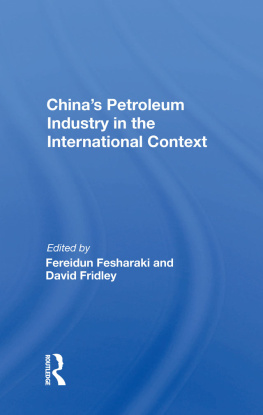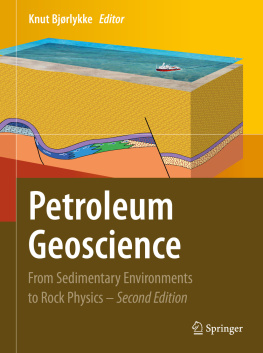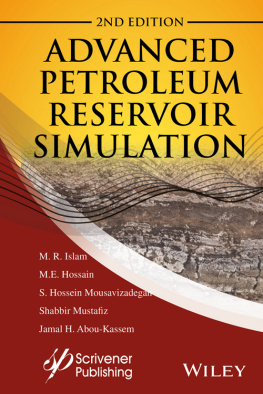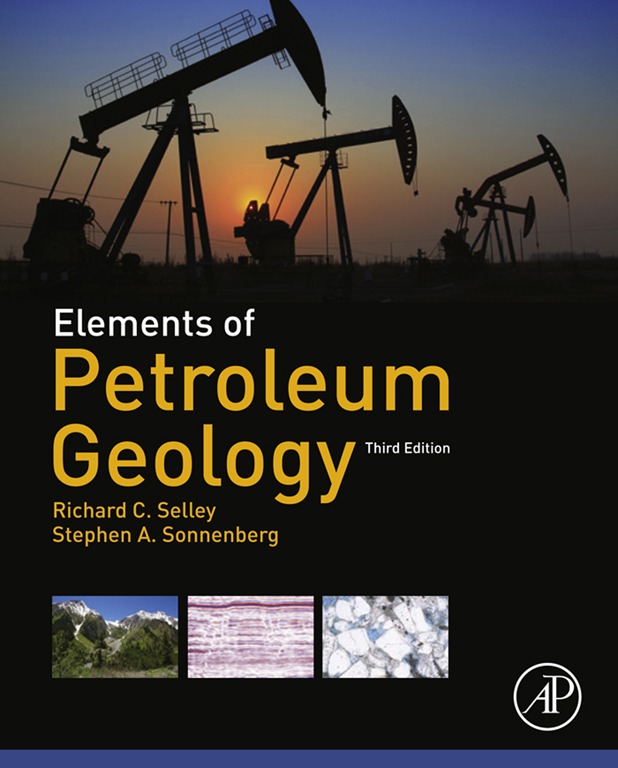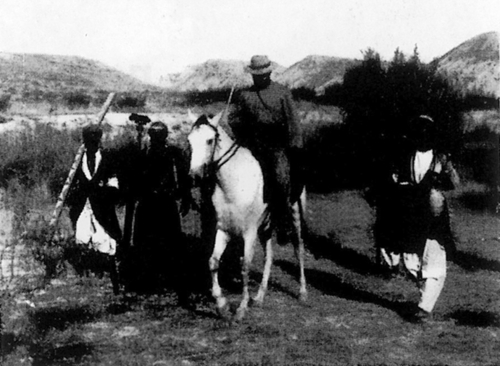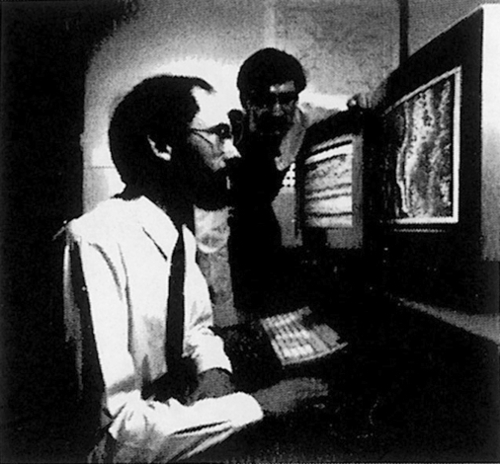Elements of Petroleum Geology
Third Edition
Richard C. Selley
Stephen A. Sonnenberg
Table of Contents
Petroleum Exploration: Past, Present, and Future
The Past: Petroleum geologist looking for oil in Persia (now Iran) in the early twentieth century. (Courtesy of the British Petroleum.)
The Present: Petroleum geoscientists looking for oil anywhere in the world in the late twentieth century. (Courtesy of Esso UK plc.)
The Future: Post-millennial cyber-cadet seeking abiogenic petroleum anywhere in the universe. (Courtesy of Paradigm Geophysical, created by Sachnowitz & Co.)
Copyright
Academic Press is an imprint of Elsevier
525 B Street, Suite 1800, San Diego, CA 92101-4495, USA
225 Wyman Street, Waltham, MA 02451, USA
The Boulevard, Langford Lane, Kidlington, Oxford OX5 1GB, UK
32 Jamestown Road, London NW1 7BY, UK
Copyright 2015, 1998, 1985 Elsevier Inc. All rights reserved.
No part of this publication may be reproduced or transmitted in any form or by any means, electronic or mechanical, including photocopying, recording, or any information storage and retrieval system, without permission in writing from the publisher. Details on how to seek permission, further information about the Publishers permissions policies and our arrangements with organizations such as the Copyright Clearance Center and the Copyright Licensing Agency, can be found at our website: www.elsevier.com/permissions.
This book and the individual contributions contained in it are protected under copyright by the Publisher (other than as may be noted herein).
Notices
Knowledge and best practice in this field are constantly changing. As new research and experience broaden our understanding, changes in research methods, professional practices, or medical treatment may become necessary.
Practitioners and researchers must always rely on their own experience and knowledge in evaluating and using any information, methods, compounds, or experiments described herein. In using such information or methods they should be mindful of their own safety and the safety of others, including parties for whom they have a professional responsibility.
To the fullest extent of the law, neither the Publisher nor the authors, contributors, or editors, assume any liability for any injury and/or damage to persons or property as a matter of products liability, negligence or otherwise, or from any use or operation of any methods, products, instructions, or ideas contained in the material herein.
ISBN: 978-0-12-386031-6
British Library Cataloguing-in-Publication Data
A catalogue record for this book is available from the British Library
Library of Congress Cataloguing-in-Publication Data
A catalog record for this book is available from the Library of Congress
For information on all Academic Press publications visit our web site at http://store.elsevier.com/
Printed and bound in USA
Preface to the Third Edition
The first edition of Elements of Petroleum Geology was published in 1985, some 30 years ago. The objective of the book was to describe the elements of petroleum geology. Beginning with the deposition and maturation of a source rock, followed by the migration of petroleum from the source into a porous permeable reservoir rock trapped beneath an impermeable seal. This book also described the science and technology of petroleum exploration and production, from the first geophysical surveys to the finale of enhanced recovery.
When the second edition was published in 1998 the fundamental elements of petroleum geology remain little changed, but the science and technology of petroleum exploration and production had evolved. For example, ever improving computer power enabled the development of 3D seismic surveys. The ability to interpret reflecting horizons progressed to interpreting the amplitude of individual seismic wave traces.
When Elsevier requested the production of a third edition RCS, by now in the spring time of his senility, felt daunted by the task. Elsevier suggested a co-author. SAS accepted the challenge and has made a major contribution to the revision. In the intervening years between the second and third editions the importance of unconventionally occurring petroleum has been realized. Technological advances, notably in horizontal drilling and hydraulic fracturing have enabled gas and oil to be produced from the very source rocks themselves, without migration and entrapment in a conventional reservoir. The production of gas and oil from shale, together with coal bed methane is accelerating. This shift has many economic and environmental benefits, not least because it diminishes reliance on burning coal leading to a cut in carbon dioxide emissions.
We hope that this third edition will, like its predecessors, be useful for student geoscientists and engineers preparing for a career in the energy industry, and also for mature practitioners in the upstream petroleum industry seeking a wide ranging account of a large area of science and engineering.
RCS, Royal School of Mines, Imperial College, London, UK
SAS, Colorado School of Mines Golden Colorado, USA
Acknowledgments
There are two main problems to overcome in writing a book on petroleum geology. The subject is a vast one, ranging from arcane aspects of molecular biochemistry to the mathematical mysteries of seismic data processing. The subject is also evolving very fast as new data become available and new concepts are developed. I am very grateful to the many people who read draft of the manuscript, pointed out errors of fact or emphasis, and suggested improvements. Much of this load was borne by staff at the Imperial College, London University. The geophysical sections were dealt with by Dr Thomas-Betts and the late Weildon and the late Williamson, geochemistry by the late Dr Kinghorn, petroleum engineering by the late Professor Wall, and most of the remaining topics by the late Professor Stoneley. Mr Maret of Schlumberger reviewed formation evaluation section.
For permission to use previously published illustrations I am grateful to the following: Academic Press, the American Association of Petroleum Geologists, Applied Science Publishers, Badley Earth Sciences Ltd., Blackwell Scientific Publications, BP Exploration, Gebruder Borntraeger, Geoexplorers International Inc., Cambridge University Press, the Canadian Association of Petroleum Geologists, Chapman and Hall, Esso UK plc., Coherence Technology Company, W.H. Freeman and Company, Geology , The Geologists Association of London, Geological Magazine , the Geological Society of London, the Geological Society of South Africa, Gulf Coast Association of Geological Societies, the Geophysical Development Corporation, GMG Europe Ltd., GVA International Consultants, the Institute of Petroleum, the Journal of Geochemical Exploration , the Journal of Petroleum Geology , Marine and Petroleum Geology , McGraw-Hill, the Norwegian Petroleum Society, NUMAR UK Ltd., the Offshore Technology Conference, Paradigm Geophysical Corporation, Princeton University Press, Sachnowitz & Co., Schlumberger Wireline Logging Services, Schlumberger Oil-field Review, the Society of Petroleum Engineers, the Society of Professional Well Log Analysts, Springer-Verlag, John wiley & Sons, World Geoscience UK Ltd., and World Oil.


